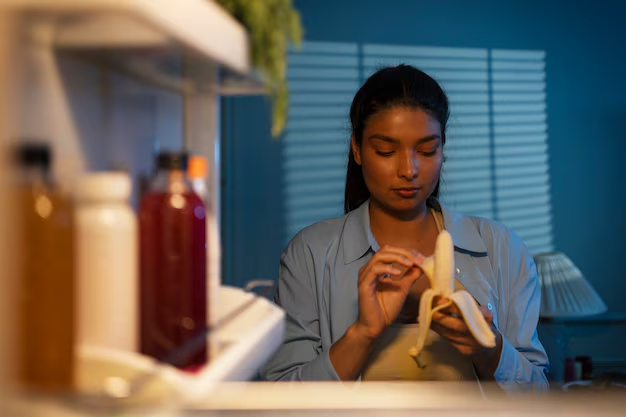Keeping Your Cool: How to Manage Your Refrigerator During a Power Outage
When the lights go out and the hum of the refrigerator suddenly stops, your first thought might be about the perishables stacked inside. Amidst the concerns of thawing meats and wilting greens, understanding how long your refrigerator can keep its cool during a power outage is crucial. This comprehensive guide will delve into the best practices for maintaining food safety and maximizing the preservation of your stored goods when electricity is temporarily out of reach.
🚦 The Golden Rule: Keep the Doors Closed
Before exploring extensions and alternatives, let’s start with the golden rule of managing your refrigerator during a power outage: Keep the doors closed! This simple action is your first line of defense against food spoilage.
Why It Matters
Each time you open the refrigerator, you invite warm air in, which accelerates the rise in temperature. Cold air is denser than warm air, so maintaining that barrier of coldness is essential to prolonging your food’s shelf life.
How Long Can It Last?
Under typical conditions:
- A refrigerator can maintain a safe temperature for about 4 hours if unopened.
- A full freezer can last up to 48 hours, while a half-full freezer may last approximately 24 hours.
These timeframes hinge on consistent conditions—meaning minimal to no door openings. Therefore, resist the urge to check on items, and ensure everyone in the household is on the same page.
🌡️ Monitoring the Temperature
Having a reliable thermometer inside both your refrigerator and freezer can be invaluable when the power is out. This small investment allows you to make informed decisions based on actual temperatures rather than guesswork.
Suggested Temperature Guidelines
- Refrigerator: Should remain below 40°F (4°C).
- Freezer: Aim to stay at or below 0°F (-18°C).
If, after the power is restored, you find the fridge’s interior exceeding these safe zones, it’s best to evaluate the integrity of your food items.
🥶 Making the Most of Your Freezer
A well-organized freezer can be a lifesaver during power outages. Here’s how to optimize it:
Fill It Up
A full freezer retains cold better than an empty one. If you don’t have enough to fill it, consider freezing water bottles or bags of ice to maintain the cold environment.
Grouping Strategy
Cluster similar items together. Keeping meats, vegetables, and frozen goods clustered helps them maintain their specific temperature zone for longer durations.
Know What to Freeze
Some perishables can extend their usability by being moved to the freezer pre-emptively. Items like dairy, eggs, certain fruits, and vegetables can freeze well, depending on their intended use after thawing.
⚡ Preparing Ahead: Power Outage Kits
Before a power outage occurs, assemble a toolkit to see you through without stress. Here’s what it might include:
- Thermometers: As discussed, placing these inside your appliance beforehand is beneficial.
- Flashlights or Lanterns: Keep an alternative light source handy to minimize the need to open fridge doors.
- Coolers: Standby coolers can temporarily house critical items if the outage extends beyond anticipated hours.
- Gel/Ice Packs: These can further extend the cooling period if power disconnection prolongs.
🍴 Assessing Food Safety Post-Outage
Once power returns, taking stock is essential to ensure safety in consumption. Here’s an approach to assess what stays and what goes:
The Smell & Sight Test
While these aren’t foolproof methods, they are initial cues. If food shows signs of spoilage (such as off smells or discoloration), it may be best to discard those.
The Two-Hour Rule
If food has been in the temperature danger zone (above 40°F for refrigerator items) for more than two hours, it’s generally best to toss it. High-risk items include:
- Meat, poultry, and seafood
- Dairy products
- Cooked pasta and rice
- Opened sauces, jams, and dressings
Improvising: Alternative Power Sources
In some cases, having an alternative power source can mitigate food loss significantly.
Generators
Portable generators can provide temporary power to essential appliances, including refrigerators. While using one, ensure proper ventilation to avert carbon monoxide buildup.
Battery-Powered Coolers
These offer a temporary cooling solution but might not match the efficacy of an operating refrigerator.
💡 Tips for Reducing Food Waste
- Meal Planning: Cook perishables first that are nearing their expiration.
- Canning & Preserving: Learn methods such as pickling or jarring that don’t rely on refrigeration.
- Sharing & Community Planning: If feasible, share surplus perishables with neighbors before spoilage occurs.
📋 Quick Reference: Power Outage Checklist
Keep this bulleted list handy during outages for a quick reference overview:
- 🗯️ Don’t Open the Doors: Keep refrigerator and freezer doors closed to retain cold.
- 🌡️ Monitor Temperatures: Use appliance thermometers to inform decisions.
- 🧊 Pre-Freeze Bottles: Fill gaps in your freezer with bottles to maintain cold.
- ✨ Use a Generator: If available, use a generator to keep critical appliances running.
- 📦 Organize Coolers: Have coolers ready for transferring food if necessary.
- ❄️ Know the Timeframes: Remember 4 hours (fridge), 24-48 hours (freezer) if unopened.
- ⚠️ Post-Outage Assessment: Discard items that reached the danger zone for more than two hours.
Managing a refrigerator during a power outage requires a balance of preparation, quick thinking, and common sense. By keeping these insights and strategies in mind, you can reduce the risk of food spoilage and waste, helping you come out on the other side of the outage with confidence. Remember, in the world of food storage and shelf life, a little precaution goes a long way.
